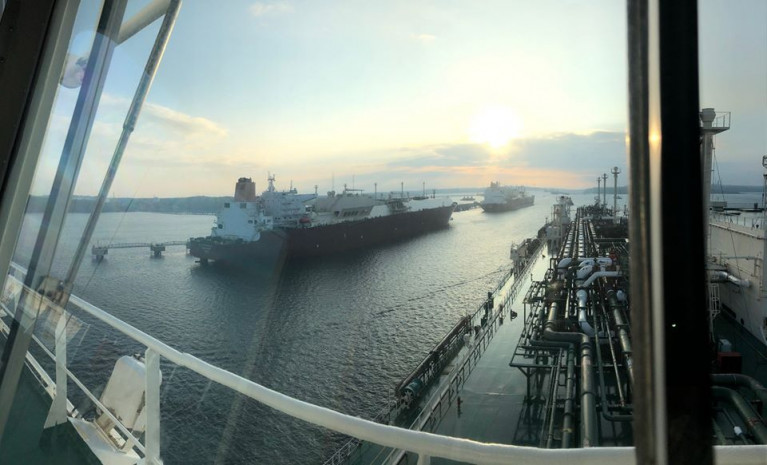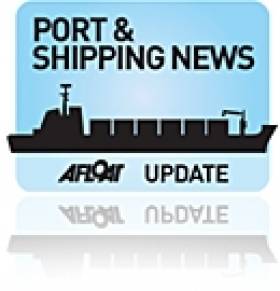Displaying items by tag: LPG
Wales has the largest energy port in the UK located in Milford Haven, Pembrokeshire from where the port published its Annual Report and Accounts for 2019 which reported strong financial results driven by increased shipping activity.
The Port of Milford Haven achieved sales growth of 27%, recording turnover of £28.1m for 2019 with operating profit of £5.7m (compared to £22.1m and £0.9m respectively in 2018). Cargo volumes increased by 13% to 35m tonnes with over 100 LNG shipments in the year, being the second highest volume in the 10 years the liquefied natural gas terminals have operated on the Haven.
The positive achievements of 2019 provided a strong platform for the Port’s ambitions to grow further in 2020. However, the current Covid-19 pandemic is having a significant impact on the many operations and activities at the Port, as well as its employees and visitors to the area. Commenting on the pandemic Chris Martin, Chair of the Port, said “In line with the Port’s core values, safety will always come first in everything that we do. I have been proud of the way the whole organisation has reacted and of their determination to remain flexible during our response.”
He continued “The Port began the new decade in a very strong financial position after a successful 2019 year in revenue terms and with a significant cash balance. This has provided a robustness to withstand the financial pressure which the efforts to stop the spread of the virus will undoubtedly have on the local, national and global economies. Additional focus will be placed on conserving cash wherever possible whilst supporting our community in the true spirit of a Trust Port and ensuring we continue to deliver on our purpose to build the prosperity of the Haven and beyond.”
Our motivation to provide jobs and drive economic benefit for current and future generations gathered pace on the multi-million pound Milford Waterfront development. Fundamental to the overall diversification strategy, the project took a significant step forward in November when outline planning consent was granted. Activity at Milford Waterfront was buoyant throughout the year with a programme of successful events and the opening of four boutique Floatel Cabins. In December plans were submitted for a flagship 100-bed hotel, with a decision expected shortly.
On the south side of the Haven, a significant amount of resource was invested in the Pembroke Dock Marine project, part of the Swansea Bay City Deal. This is an unmissable opportunity to develop a world leading marine energy and engineering centre of excellence in Pembrokeshire, with huge prospects for the supply chain. Milestones were achieved locally with support from Pembrokeshire County Council and a decision is now awaited from Welsh and UK Governments.
To consult the Annual Report and Accounts click HERE
Varadkar Supports Deepwater Port at Bremore
Drogheda Port Company successfully managed to navigate the global economic downturn with an improved and solid performance for 2010, delegates where informed during its annual report released yesterday, writes Jehan Ashmore.
Speaking about the performance of Drogheda Port Company, Leo Varadkar TD, Minister for Transport, Tourism and Sport said; "I congratulate the company on its solid trading performance in 2010 following a difficult year in 2009. Both imports and exports through the port returned to growth in 2010. The company has managed its costs well and remains profitable. I support the company's plans to develop the existing port and indeed to continue to progress its proposal for a new deepwater port at Bremore.
The Minister added "this country's return to economic prosperity will be export-led and Irish ports will play an important role in facilitating that trade. The overall structure of the State's ports will be reviewed later this year as part of the current Ports Policy Review and will take account of the recent recommendations of the McCarthy Group. Irrespective of the outcome, well managed and profitable ports such as Drogheda will continue to play an important role in serving the market and facilitating industry and jobs.
As part of the ongoing the Ports Policy Review a Consultation Document was issued in October 2010, which highlighted the important role of ports to facilitate the return to economic growth when it occurs. In addition new capacity will be required in the medium to long term and this needs to be planned for now.
The consultation also acknowledges the continuing trend towards larger ships requiring deep-water ports, the reduced availability of ships to serve smaller ports and the emergence of the concept of port-centric logistics as a key driver for future port development.
As for this year "a number of new port records were established in 2010" said Mr. Paul Fleming, Drogheda Port chief executive. "In March, the longest ever vessel to be accommodated in the port, the Rusich 1 at over 128m in length berthed at Tom Roes Point Terminal". The 4,970 tonnes vessel arrived from Vyborg, Russia with a cargo of fertiliser.
Mr Fleming also referred to the largest gas tanker ever to visit its facility at the Flogas LPG terminal when the 1,720 dwt tonnes Thresher docked last October. The Dutch flagged Thresher had arrived loaded with a cargo from the Whitegate Refinery, Cork Harbour and is operated by Chemgas which operate one of the most modern gas carrier fleets in the world.
In addition to last year's performance, first quarter figures for 2011 were revealed with trading volumes reporting an increase of 18% based from the same quarter for last year. The rise was primarily driven by export volumes of existing and new commodities.






























































